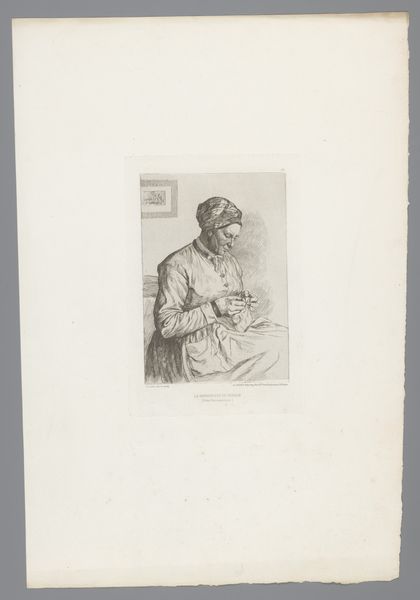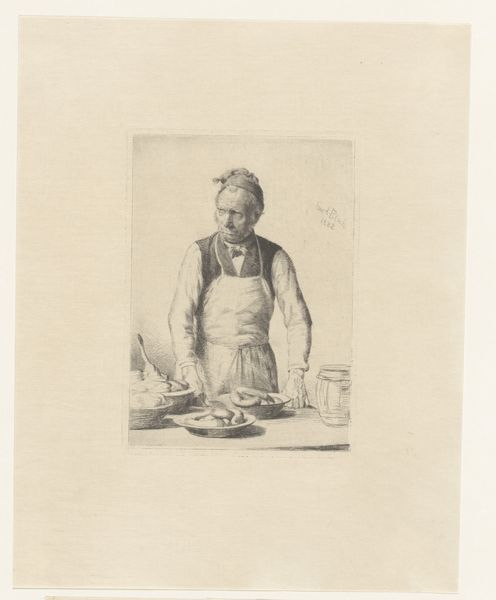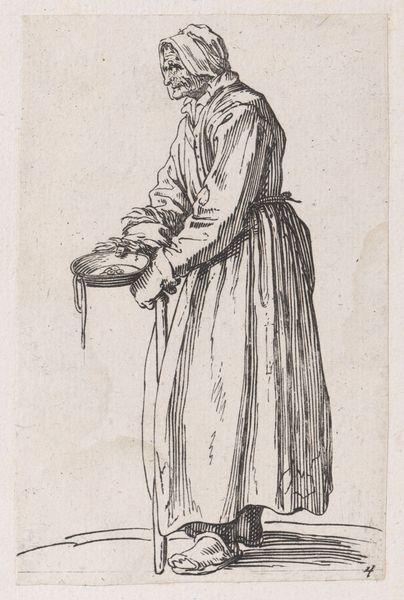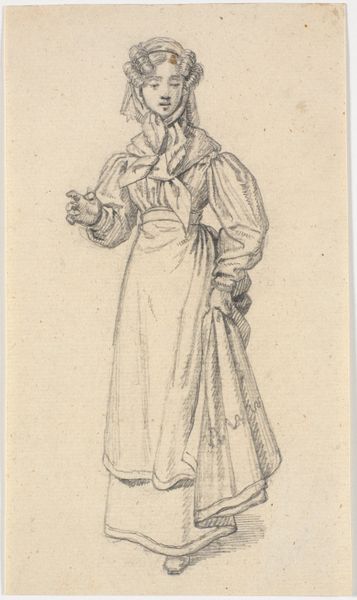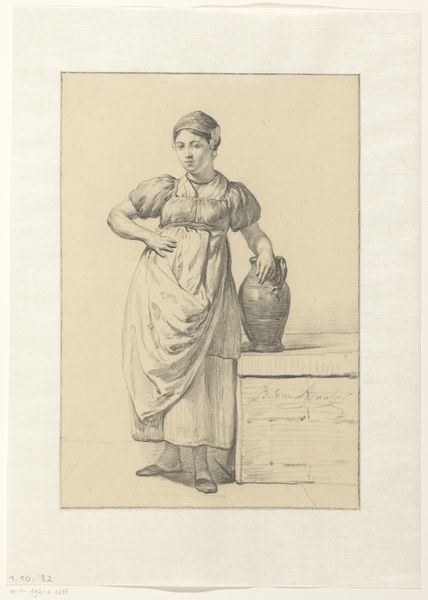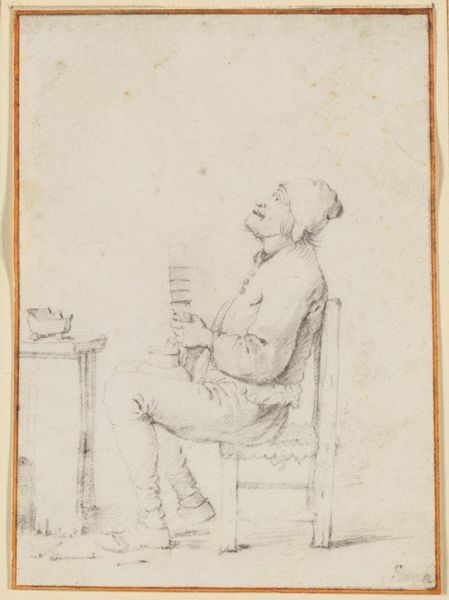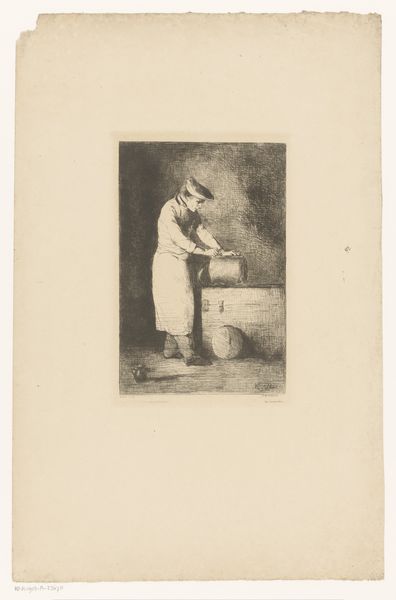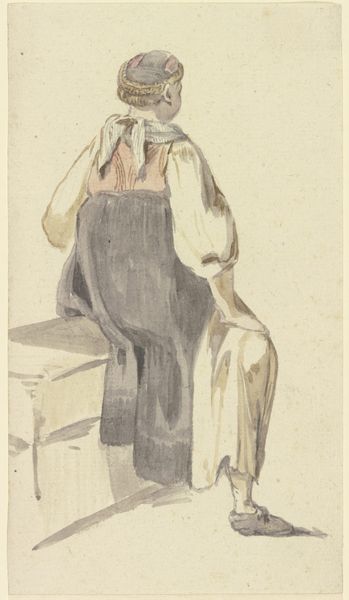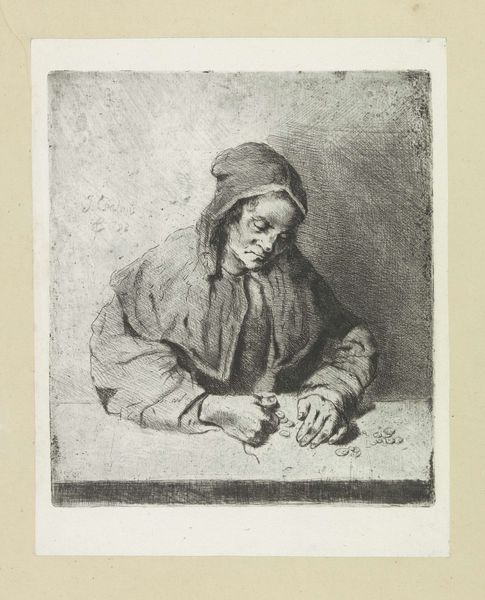
print, etching
# print
#
etching
#
genre-painting
#
realism
Dimensions: 139 mm (height) x 100 mm (width) (plademaal)
Curator: Let's discuss Carl Bloch’s 1882 etching, "The Food Seller Behind His Counter," which now resides at the SMK, the National Gallery of Denmark. It's a seemingly simple genre scene, but rich with possible interpretations. Editor: It certainly has a humble, almost stark quality. The figure seems burdened, not just by his apron but also by the world. The lines are so faint, it is like a whisper from the past. Curator: Absolutely, and in considering the time and social landscape of 19th-century Copenhagen, this work might be Bloch’s quiet commentary on class disparity. The man's weariness perhaps mirroring the lives of working-class individuals struggling to make ends meet. Editor: I’m curious about that burden you mention. Could the artist be implicitly challenging capitalist systems that push some toward precarity and marginalization? Does the artwork present a case for understanding dignity and representation through social class? Curator: Indeed, this seemingly innocuous scene can become a lens through which to explore themes of social injustice and representation. Consider the Realism movement that was gaining momentum then. Is Bloch using the guise of genre-painting to question the romanticism prevalent in the art world at the time? To suggest we should be looking at "real" people, the backbone of society? Editor: I think there’s definitely room for interpretation when observing his craft here too. In utilizing etching techniques, where the faintest details count to shape the character, the art might serve as a subtle assertion of labor rights at a time where Denmark was grappling with class tensions in society. Curator: Agreed. This piece prompts dialogue beyond just its aesthetic, becoming a portal for questioning socio-political paradigms. Editor: In essence, viewing this humble etching through a historical and theoretical framework amplifies its potential impact—reminding us of art's power to challenge and shape our perception of the world and power.
Comments
No comments
Be the first to comment and join the conversation on the ultimate creative platform.
